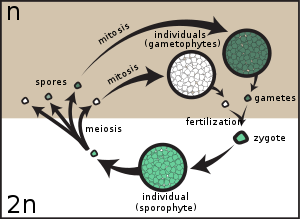Children of Israel: MUSHROOM IS UNCLEAN
Genesis 1:29 KJV
“And God said, Behold, I have given you every herb bearing seed, which is upon the face of all the earth, and every tree, in the which is the fruit of a tree yielding seed; to you it shall be for meat.”
A mushroom or toadstool is the fleshy, spore-bearing fruiting body of a fungus, typically produced above ground, on soil, or on its food source.
Spore:-In biology, a spore is a unit of sexual (in fungi) or asexual reproduction that may be adapted for dispersal and for survival, often for extended periods of time, in unfavourable conditions.[citation needed] Spores form part of the life cycles of many plants, algae, fungi and protozoa.[1]
Bacterial spores are not part of a sexual cycle, but are resistant structures used for survival under unfavourable conditions. Myxozoan spores release amoeboid infectious germs ("amoebulae") into their hosts for parasitic infection, but also reproduce within the hosts through the pairing of two nuclei within the plasmodium, which develops from the amoebula.[2]
In plants, spores are usually haploid and unicellular and are produced by meiosis in the sporangium of a diploid sporophyte. Under favourable conditions the spore can develop into a new organism using mitotic division, producing a multicellular gametophyte, which eventually goes on to produce gametes. Two gametes fuse to form a zygote, which develops into a new sporophyte. This cycle is known as alternation of generations.
The spores of seed plants are produced internally, and the megaspores (formed within the ovules) and the microspores are involved in the formation of more complex structures that form the dispersal units, the seeds and pollen grains.

Mushroom or toadstool side effects
Toadstool generally denotes one poisonous to humans.
Eating mushrooms that contain psilocybin can have a variety of effects, ranging from euphoria to hallucinations.
Individuals use psilocybin as a recreational drug. It can provide feelings of euphoria and sensory distortion that are common to hallucinogenic drugs, such as LSD.
1Corinthians 3:15-16 KJV
16 Know ye not that ye are the temple of God, and that the Spirit of God dwelleth in you?
17 If any man defile the temple of God, him shall God destroy; for the temple of God is holy, which temple ye are.
The effects of psilocybin are generally similar to those of LSD. They include altered perception of time and space and intense changes in mood and feeling.
Other possible effects of psilocybin include:
- euphoria
- peacefulness
- spiritual awakening
- derealization, or the feeling that surroundings are not real
- depersonalization, or a dream-like sense of being disengaged from surroundings
- distorted thinking
- visual alteration and distortion, such as seeing halos of light and vivid colors
- dilated pupils
- dizziness
- drowsiness and yawning
- impaired concentration
- muscle weakness
- lack of coordination
- unusual body sensations
- nausea and vomiting
- paranoia
- confusion
- frightening hallucinations
The effects of psilocybin vary between people, based on the user’s mental state, personality, and immediate environment.
If the user has a mental health condition or feels anxious about using the hallucinogen, they face a higher risk of having a bad experience.
Psychological distress is the adverse event most often reported after recreational use of psilocybin. This distress can take the form of extreme anxiety or short-term psychosis.


